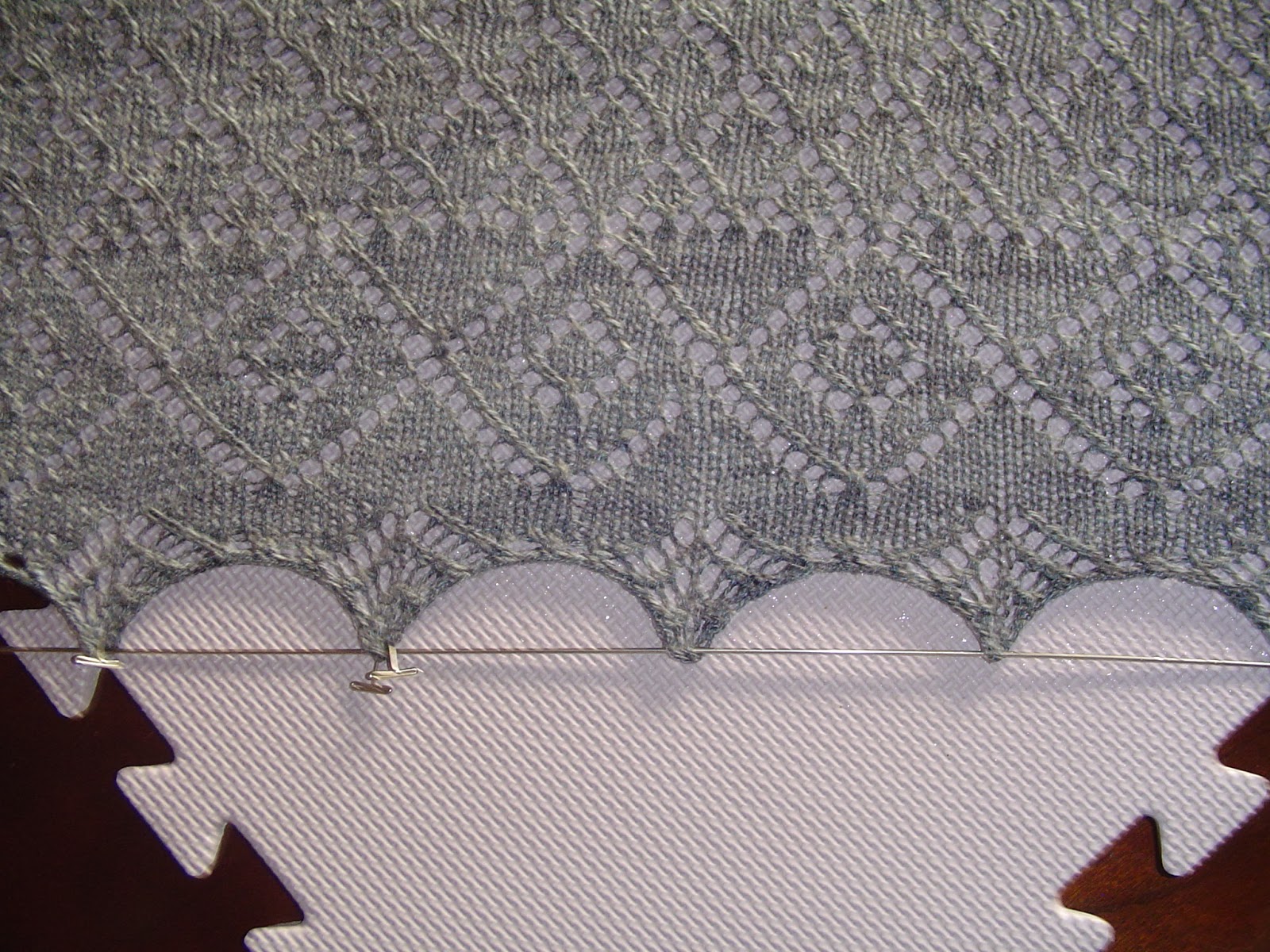Blocking makes all the difference to ensure stitch patterns show up in lace shawls. It will improve the look of your knitting for most projects, especially those made from natural fibres.The two shawls in the photos above are unblocked.
Start by soaking the knitting in lukewarm water for about 15 minutes. I add a small amount of a wool wash. I usually use Soak but there are several good ones on the market.
I next remove most of the water from the knitting. I put the work resting and hanging freely on top of my tap to let most of the water flow away for 2-3 minutes.
Then I gently press the water out by rolling up the work in a towel and squeezing. I treat the work carefully, no twisting or wringing. I unroll the towel after about 5 minutes.
I use the blocking boards in my photos, stainless steel T pins and blocking wires.
I pin out the work using the straight edges, For a triangle shawl that would be the top and the centre spine. I do the top edges first. I gently tug on the spine to make it perpendicular. I make sure these target areas are totally straight and securely pinned before I work on the lower edges. I run the wires through the top edges and use pins in both the work and to secure the wires.
Once all the edges are straight I begin pinning out the shawl points. I thread the wires into each point or along the edges if they are straight ones. I tug gently to stretch the work and I may move the bottom edges down again as the work relaxes. I adjust the level of stretch according to the fibre I'm working with. I pull more firmly on 100% wool than I do with silk and cashmere.
I assess and if everything looks good in terms of being in alignment I search for a place to leave the item that my cats can't get at until is is completely dry.
Yes... cats do have a thing for wet yarn, I don't know why.
Occasionally I do a second pass on the points. Sometimes they need a little extra work because the horizontal stretching interferes with the points being pulled down far enough. The silver grey shawl is a silk and sea cell blend. The point definition was good on the first pass. The purple shawl is silk and cashmere. I did not block it as firmly because of its delicate nature. I took a second pass after it dried the first time and worked on the points only. On the final blocking I moved the points closer together so I could pull a little more firmly, vertically. I smoothed the rest of the shawl away gently with my hands. I pinned each point and used a spray bottle of water to dampen the work at the edges only and then I let the points dry again before I took the work off of the blocking boards.
Here's the final photos of the grey shawl.









.jpg)
.jpg)
.jpg)

.jpg)










No comments:
Post a Comment